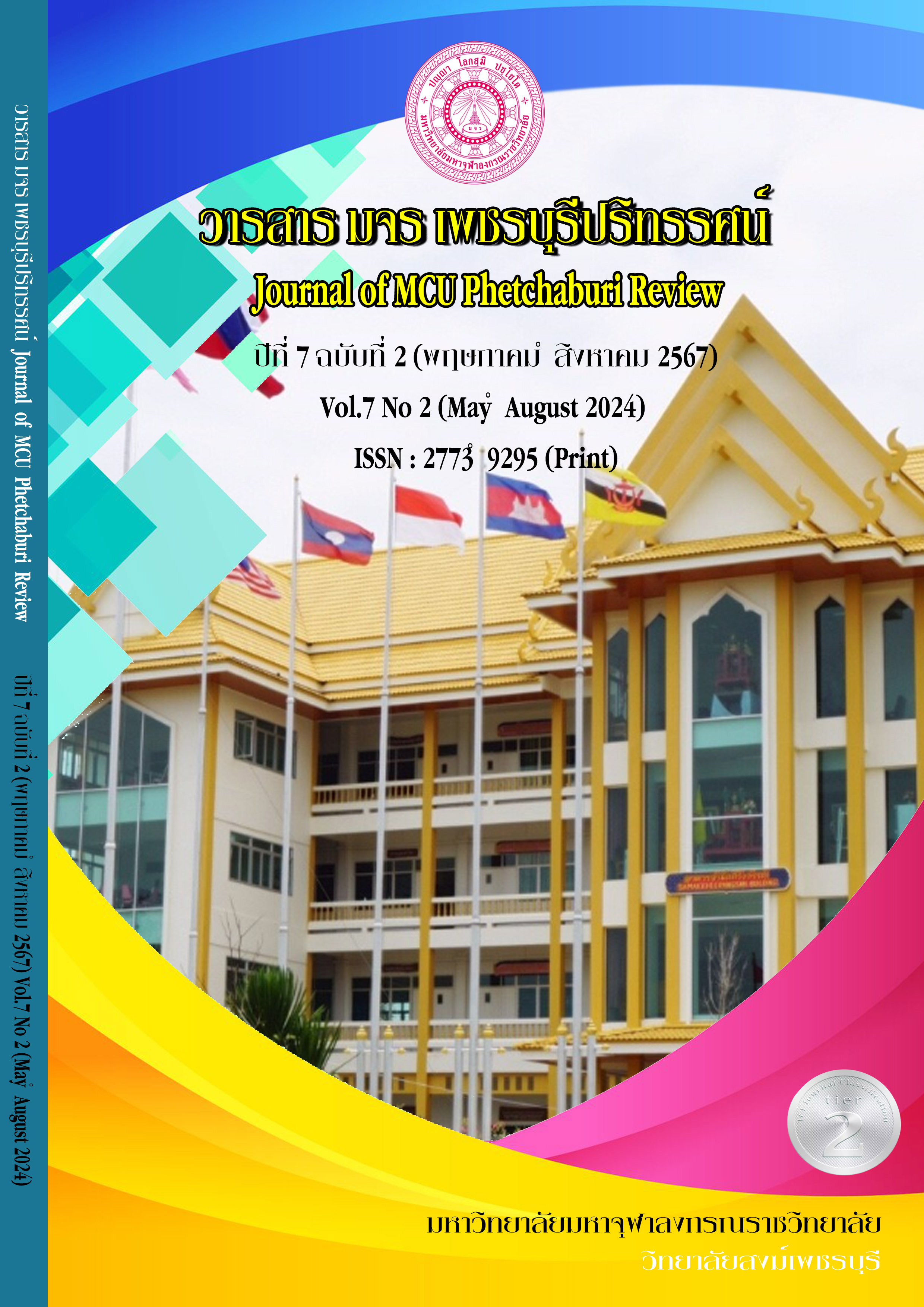Guidelines for Managing World Heritage areasA Case study of Sukhothai Historical Park
Main Article Content
Abstract
The research article aims to 1) study the management conditions of World Heritage areas, 2) study and compare personal factors affecting the management of World Heritage areas, and 3) study guidelines for managing World Heritage areas. Conduct research according to integrated research methods. During quantitative research A survey research study was used with 236 personnel of the Sukhothai Historical Park, collected from the entire population. The tool was a questionnaire. Data were analyzed by frequency, percentage, mean, and standard deviation. and t-tests, F-tests, and qualitative research. Through in-depth interviews with 12 key informants, data were analyzed using descriptive data formats. The results of the research found that 1) the level of management conditions of World Heritage areas Overall, it was at a high level. 2) Comparison of personal factors affecting the management of World Heritage areas. It was found that personnel with different genders, ages, education, positions, salaries, and work experiences had different opinions on the management of World Heritage areas. Not different in every aspect. 3) Guidelines for managing World Heritage areas found that (1) conducting surveys to clearly register the total number of ancient sites (2) conducting academic work and restoring historical sites (3) Conducting the transfer of information and knowledge regarding area management practices (4) Conducting coordination and cooperation between agencies and communities and (5) Conducting promotion and support of benefits to the people in the area from effective management. concrete
Article Details

This work is licensed under a Creative Commons Attribution-NonCommercial-NoDerivatives 4.0 International License.
References
ธาตรี มหันตรัตน์ และจันทร์แรม เรือนแป้น. (2562). รูปแบบการบริหารจัดการพื้นที่มรดกโลกแบบมีส่วนร่วมเพื่อส่งเสริมการท่องเที่ยวนครประวัติศาสตร์พระนครศรีอยุธยาและเมืองบริวารอย่างยั่งยืน. วารสารวิจัยราชภัฏกรุงเก่า, 6(3) , 31- 38.
พระปลัดโอภาส โอภาโส (ศิริกิตติกุล). (2562). การมีส่วนร่วมของพระสงฆ์ในการจัดการพื้นที่มรดกโลกจังหวัดพระนครศรีอยุธยา. ใน (ดุษฎีนิพนธ์พุทธศาสตรดุษฎีบัณฑิต สาขาวิชาการจัดการเชิงพุทธ): บัณฑิตวิทยาลัย มหาวิทยาลัยมหาจุฬาลงกรณราชวิทยาลัย.
ยุภาพร ไชยแสน. (2563). การศึกษาเปรียบเทียบคุณค่าอันโดดเด่นเป็นสากลของพระธาตุพนมสู่การเป็นแหล่งมรดกโลกทางวัฒนธรรม. ใน (วิทยานิพนธ์สถาปัตยกรรมศาสตรมหาบัณฑิต สาขาวิชาการวางผังชุมชนเมืองและสภาพแวดล้อม): บัณฑิตวิทยาลัย มหาวิทยาลัยมหาสารคาม.
สำนักงานพื้นที่พิเศษ 4. (2566). แผนยุทธศาสตร์การพัฒนาพื้นที่พิเศษมรดกโลกสุโขทัย-ศรีสัชนาลัย-กำแพงเพชร (พ.ศ.2566-2570). กรุงเทพมหานคร: องค์การบริหารการพัฒนาพื้นที่พิเศษ เพื่อการท่องเที่ยวอย่างยั่งยืน (องค์การมหาชน) กระทรวงการท่องเที่ยวและกีฬา.
สีสมพร สุดทิจัก. (2563). กลยุทธ์การบริหารการพัฒนายุทธศาสตร์การท่องเที่ยวเชิงนิเวศในบริบทมรดกโลกทางธรรมชาติ : กรณีศึกษาป่าสงวนแห่งชาติหินหนามหน่อเมืองบัวละพา แขวงคำม่วน สาธารณรัฐประชาธิปไตยประชาลาว. ใน (วิทยานิพนธ์ปรัชญาดุษฎีบัณฑิต สาขาวิชาการบริหารการพัฒนา): บัณฑิตวิทยาลัย มหาวิทยาลัยราชภัฏสกลนคร.
อนัสพงษ์ ไกรเกรียงศร. (2562). การบริหารจัดการเส้นทางท่องเที่ยวแหล่งมรดกโลก อุทยานประวัติศาสตร์สุโขทัย อุทยานประวัติศาสตร์ศรีสัชนาลัย และอุทยานประวัติศาสตร์กำแพงเพชร. ใน (ดุษฎีนิพนธ์ปรัชญาดุษฎีบัณฑิต สาขาวิชาการบริหารศิลปะและวัฒนธรรม): บัณฑิตวิทยาลัย มหาวิทยาลัยบูรพา.
อุทยานประวัติศาสตร์สุโขทัย. (2566). ข้อมูลอุทยานประวัติศาสตร์สุโขทัย. สุโขทัย: อุทยานประวัติศาสตร์สุโขทัย.


